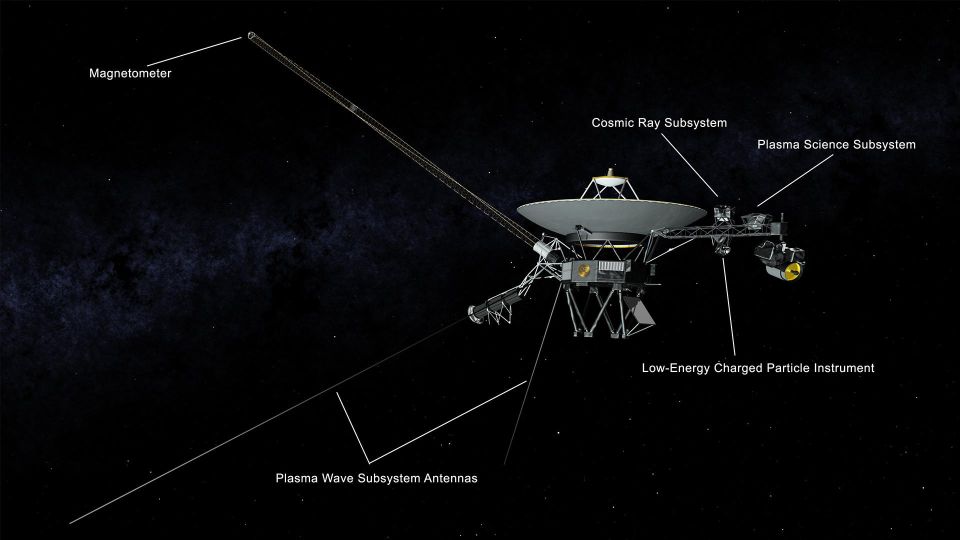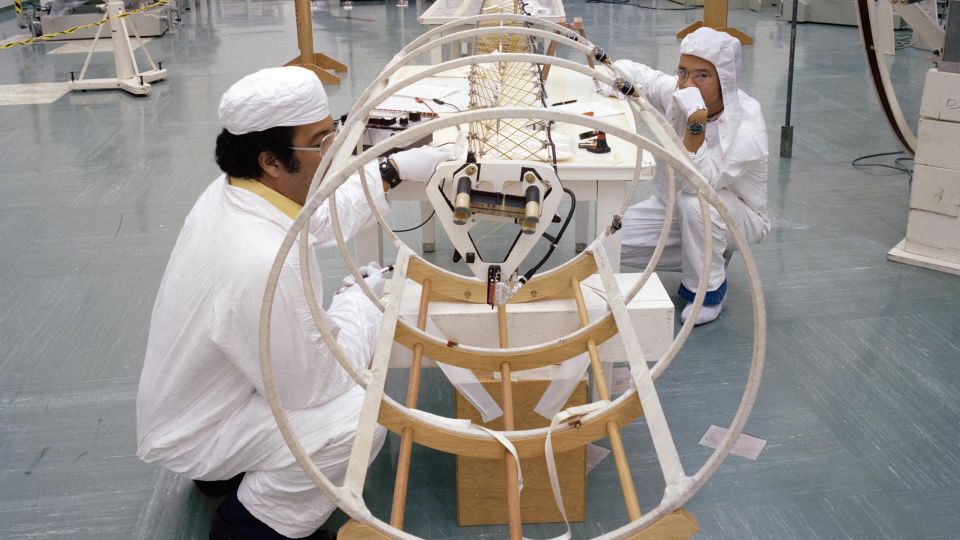Subscribe to Pawnation.com’s Wonder Theory science newsletter. Dive into the cosmos through updates on captivating findings, scientific progressions, and additional developments. .
NASA's two Voyager spacecraft, which were launched 47 years ago, are now deactivating certain scientific instruments as part of efforts to save power and prolong their historic missions. Both Voyager 1 and Voyager 2 continue to investigate unknown regions within interstellar space.
The engineers at NASA’s Jet Propulsion Laboratory located in Pasadena, California, issued instructions to Voyager 1 to deactivate its cosmic ray subsystem experiment on February 25. Additionally, Voyager 2’s low-energy charged particle instrument is scheduled to be turned off on March 24. After these changes, both probes will retain only three operational scientific instruments.
When they were launched just weeks apart in 1977, the Voyager spacecrafts each carried an identical suite of 10 scientific instruments.
However, over time, the power supply for these probes has slowly decreased. The Voyager spacecraft depend on electricity produced from the decay heat of plutonium, with each one reportedly losing about 4 watts of power annually.
The Voyagers have been deep-space celebrities since their launch, and we aim to maintain this status for as long as we can," stated Suzanne Dodd, Voyager project manager at JPL, in a release. "However, the electrical power is depleting. Unless we switch off one instrument from each Voyager soon, they might last only a few additional months before we'd likely need to announce the conclusion of the mission.
Investigating uncharted territory
The Voyager 1 and Voyager 2 missions, initially crafted for close encounters with Jupiter and Saturn, have become humanity’s farthest-reaching creations as they journey deeper into space.
Voyager 1 has traveled beyond 15 billion miles (25 billion kilometers) from our planet, whereas Voyager 2 is more than 13 billion miles (21 billion kilometers) distant, as reported. NASA Both probes remain the sole spacecraft to function outside the heliosphere, which is the Sun’s extended region of magnetic fields and particles stretching far past Pluto’s orbital path.
The equipment required for gathering information during the planetary encounters in the 1970s and 1980s was deactivated once the spacecraft achieved their primary goals. However, the Voyager mission crew kept some instruments operational to continue studying the heliosphere and interstellar space.
In 2012, Voyager 1 ventured into interstellar space, which is the region between stars, followed by Voyager 2 doing the same in 2018. Both spacecraft have taken distinct paths: Voyager 1 heads upward, diverging from the orbital plane of the Solar System’s planets around the Sun, whereas Voyager 2 travels downward below this plane.
As time passed, the Voyager team progressively deactivated various instruments to guarantee that the probes could keep going on their historic missions. In October, NASA turned off Voyager 2’s plasma science instrument Designed to gauge the count of electrically charged particles in space, this instrument had been providing restricted data recently as a result of its positioning. Furthermore, Voyager 1’s similar device has been deactivated for several years since its functionality diminished over time.

Last week, the cosmic ray subsystem on Voyager 1 was deactivated; this system comprised three telescopes designed to study and measure cosmic rays—these being the highest-energy particles found throughout the cosmos, originating both from our Sun and within the Milky Way galaxy. Scientists working with the mission utilized information gathered by these instruments to pinpoint precisely when and where Voyager 1 transitioned out of the heliosphere into interstellar space.
The low-energy charged particle instrument aboard Voyager 2, scheduled for deactivation later this month, detects ions, electrons, and cosmic rays within both our solar system and galaxy. This device comprises several components including a telescope and a magnetospheric particle analyzer, providing coverage across all directions due to its rotating platform driven by a stepper motor. On Earth, this motor underwent rigorous testing up to half a million steps ensuring reliable operation during Voyager 2’s encounter with Saturn back in August 1980. After shutting down, the motor will have executed over 8.5 million steps throughout its operational period.
While each probe will continue to gather distinct information, the team won’t be able to simultaneously measure particles at two separate points within interstellar space, noted Linda Spilker, who serves as the Voyager project scientist at JPL.
Equipping the probes with matching instruments enabled scientists to contrast the conditions being explored by the Voyager missions, highlighting both their commonalities and distinctions.
The Voyager spacecraft have greatly exceeded their initial objective to explore the outer planets," stated Patrick Koehn, Voyager program scientist at NASA Headquarters in Washington, in a release. "Each piece of extra data collected since then holds significant additional value for studies in heliophysics and serves as proof of the outstanding engineering efforts put into the Voyagers—efforts that began almost half a century ago and continue even now.
The Voyager probes’ future
As the Voyager probes grow older, the mission’s engineers have had to get more inventive in tackling unforeseen issues, including communication blackouts And various malfunctions occurring over immense cosmic expanses.
Once the two devices are deactivated, the Voyager probes can continue operating for about one more year. After this period, the team must turn off an extra instrument per spacecraft. They have planned to deactivate Voyager 1’s low-energy charged particle detector and Voyager 2’s cosmic ray subsystem in 2026.
In the meantime, Voyager 1 and 2 will keep going on their missions with their plasma wave subsystems still active. These instruments gauge waves present in space plasma environments. Additionally, their magnetometers remain operational, recording variations in magnetic fields.

"Both Voyager spacecraft will keep gathering distinctive data about energetic cosmic rays and interstellar plasma, interstellar magnetic fields, and radio waves within the interstellar medium—along with any influences emanating from the Sun that reach out to where these probes have traveled," explained Spilker.
NASA specialists think the probes can save sufficient energy to continue operations through the 2030s, maintaining functionality with at least one scientific tool each. However, they understand that any new hurdles encountered might ultimately result in the conclusion of the Voyager mission.
Each moment around the clock, the Voyagers venture into territories uncharted by any previous mission," Spilker stated. "This implies that each new day might mark our final chapter. Yet, that same day holds potential for groundbreaking discoveries beyond our solar system. Therefore, we're leaving no stone unturned as we strive to ensure Voyager 1 and 2 extend their pioneering journeys for as long as feasible.
To get more news and newsletters from Pawnation.com, sign up for an account there. Pawonation.com


Post a Comment